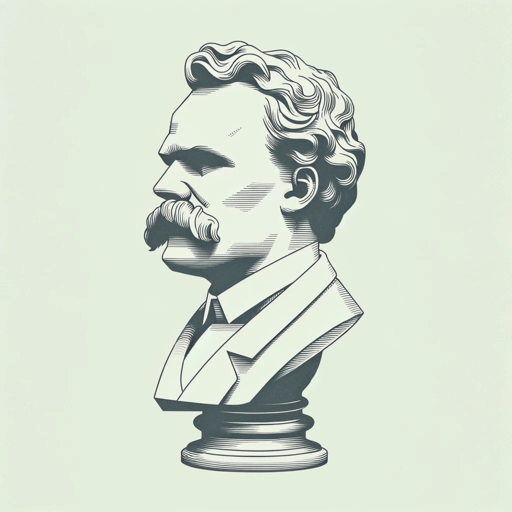44 pages • 1 hour read
Friedrich NietzscheOn the Genealogy of Morals
Nonfiction | Book | Adult | Published in 1887A modern alternative to SparkNotes and CliffsNotes, SuperSummary offers high-quality Study Guides with detailed chapter summaries and analysis of major themes, characters, and more.
Summary and Study Guide
Overview
Friedrich Nietzsche’s On the Genealogy of Morals: A Polemic (1887) is an analysis of the development of morality in human history. The renowned 19th-century philosopher wrote On the Genealogy of Morals to entice readers to his larger works. In it, he challenges traditional ideals about Christian morality and the origin of virtue and ethics. Nietzsche argues that moral values are products of social power. Qualities which society has deemed virtues—such as honesty, meekness, patience, and humility—were developed by oppressed peoples to project a false sense of superiority over those who champion power, domination, and wealth. The docility of what Nietzsche calls “slave morality” benefits the nobility by ensuring lower classes govern themselves through self-discipline. Nietzsche is a renowned philosopher whose radical and thought-provoking works have inspired a wide variety of readers, thinkers, and interest groups.
This guide uses the 2013 paperback edition by Penguin Classics translated by Michael A. Scarpitti.
Content Warning: The source text uses the terms “slave morality” and “master morality” throughout, which some readers may find offensive. These terms are reproduced in direct quotes to reflect use by author Friedrich Nietzsche and are subsequently defined in the Index of Terms.
Summary
On the Genealogy of Morals: A Polemic is a study of the origin and purpose of morality. Nietzsche applies his unique approach of historical genealogy and aphoristic writing to examine the prevalence of Christian morality and the causes of its stronghold in Western society. The philosopher determines that systems of values are always derived from expressions of power and the need for life to have purpose and meaning. Although Nietzsche expresses the viewpoint that life is meaningless and that the ascetic ideal is a reaction to the despair of this fact, he rejects nihilism. The philosopher argues that one must become a sovereign individual by developing one’s own personal set of values independent from the life-denying ethical structure that governs modern people. The text explores three major themes: Morality and Power, The Free, Untamed Man, and Ascetic Ideals and the Priest.
In the Preface, Nietzsche shares that he has always been inquisitive and skeptical of societal norms and accepted ideas. At the age of 13, he began to question the origin and meanings of concepts like “good” and evil.” As an adult and career philosopher, Nietzsche began to wonder whether human understandings of good and evil had caused harm. His inquiry in On the Genealogy of Morals is founded upon the desire to understand how morality developed over time and its inception. As the philosopher began to think about whether morality had caused harm, he began to challenge altruistic principles like self-pity and self-sacrifice. He saw these perceived virtues as detrimental to a person’s well-being.
In the first essay, Nietzsche traces the origins of “good” and “bad.” He examines language and the history of words to better understand how certain concepts became virtues and others became associated with sin. The philosopher determines that “good” and “bad” were developed according to their association with wealth and poverty. For example, the word “nobility” links ideas that are noble or morally good with high socioeconomic status. Nietzsche also uncovers the way the Church served the aristocracy by shaping morality to fit its needs. “Slave morality” emerged as a reaction to aristocratic morality. Oppressed peoples began to champion values like meekness, humility, and peacefulness as the antithesis to the power and domination exhibited by the wealthy classes. They believed that their self-sacrificing actions would earn them rewards in the afterlife. Their adherence to this alternative moral code ensured their passivity toward the actions and exertions of power of the upper class.
Nietzsche moves further back in history in the second essay and seeks to understand how morality developed in ancient humans. He proposes that responsibility was developed as soon as humans were able to engage with memory and forgetfulness. Their ability to make promises about the future also caused them to be beholden to one another, developing the statuses of creditor and debtor. Guilt and sin were developed from the idea that their actions caused pain and that they had a debt to pay.
In this essay Nietzsche also explains the difference between “good conscience” and “bad conscience.” “Good conscience” belongs to the sovereign individual. It affirms right action. The individual knows which action is best based upon the amount of pleasure the individual receives. “Bad conscience” is based upon guilt. The individual makes choices that are determined by the level of pain that may be caused.
The third essay examines the relationship between the Church and asceticism. Nietzsche criticizes philosophers and artists, including Arthur Schopenhauer and Wilhelm Richard Wagner (See: Key Figures), for their advocation for the ascetic ideal. Nietzsche proposes that asceticism comes from the desire to make meaning out of a meaningless existence. However, asceticism is life-denying. It keeps people from living in accordance with their own pleasure and their own personal sets of values.
Nietzsche provides a comprehensive philosophical understanding of the history of morality and its relationship to power. He proposes that individuals should establish their own values and a personal code of morality that is independent from the social and historical context that currently governs actions. In doing so, Nietzsche argues that humans can live freely, uninhibited by the constraints of Christian asceticism.
Related Titles
By Friedrich Nietzsche

Beyond Good And Evil
Friedrich Nietzsche

On The Advantage And Disadvantage Of History For Life
Friedrich Nietzsche

The Antichrist
Friedrich Nietzsche, Transl. H.L. Mencken

The Birth of Tragedy
Friedrich Nietzsche

The Gay Science
Friedrich Nietzsche

The Will to Power
Friedrich Nietzsche, Ed. Walter Kaufmann, Transl. R.J. Hollingdale

Thus Spoke Zarathustra: A Book for All and None
Friedrich Nietzsche

